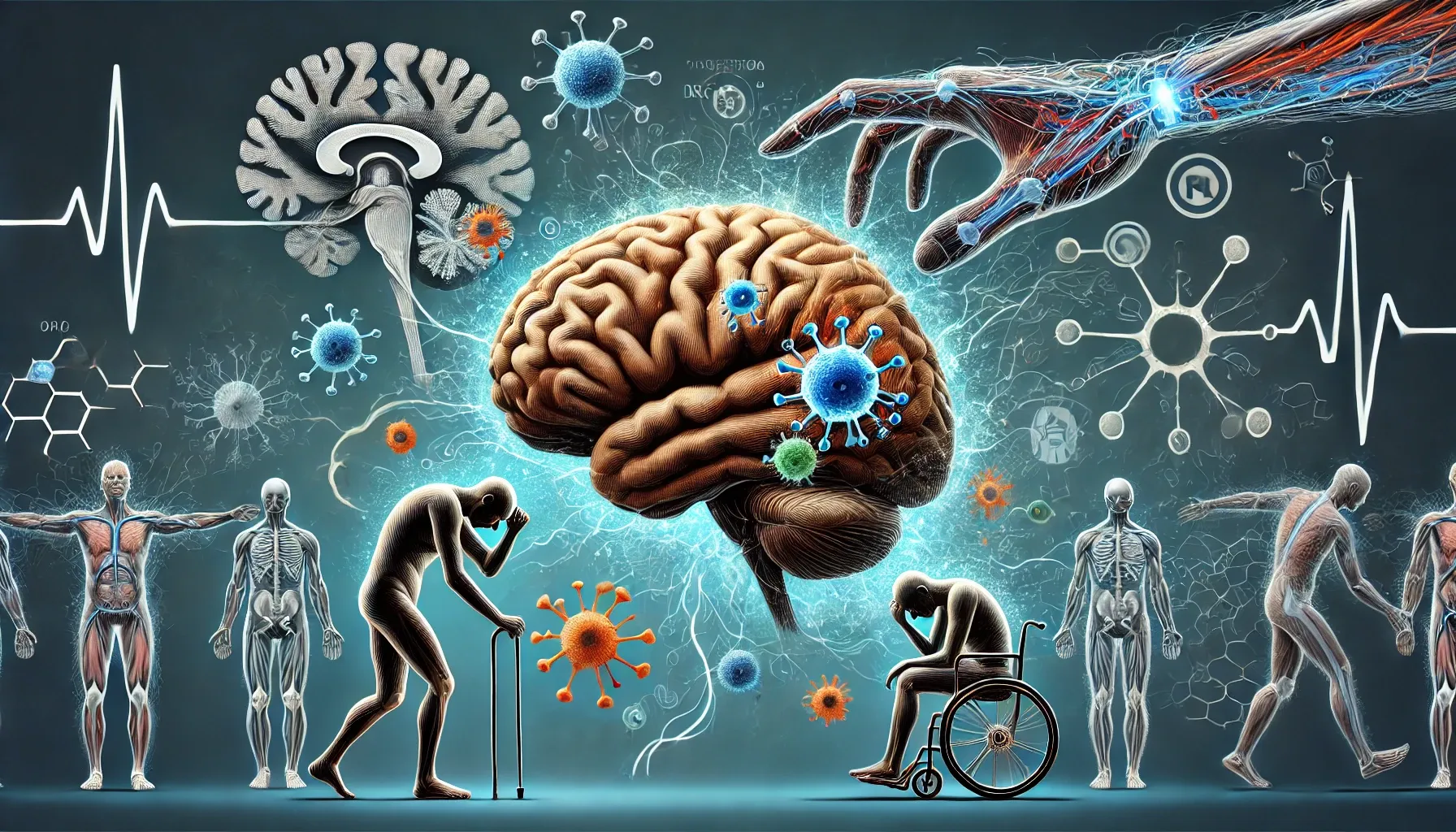Impacts of Parkinson's Disease on Neurological Function and Quality of Life

Introduction
Parkinson's Disease (PD) is a chronic and progressive neurodegenerative disorder that significantly impairs both motor and non-motor functions, affecting millions worldwide. It primarily manifests through symptoms such as bradykinesia, rigidity, tremor, and postural instability. However, its impacts extend beyond mere physical symptoms, permeating the quality of life and daily activities of those afflicted. The purpose of this review is to critically examine the broad effects of Parkinson’s Disease on neurological functions and the consequent ramifications on patients' quality of life, aiming to highlight the urgency for advancing research and improving treatment strategies.
Neurological Impacts of Parkinson's Disease
Parkinson’s Disease fundamentally affects neurological functions through the degeneration of dopaminergic neurons in the substantia nigra, leading to notable motor symptoms [1]. The cardinal motor symptoms include bradykinesia, which is the slowness of movement; rigidity; involuntary tremors; and postural instability which profoundly affects balance and coordination. These symptoms stem from the disrupted secretion of dopamine, which is crucial for regulating movement and coordination in the human body [2].
Moreover, Parkinson’s Disease is associated with various non-motor neurological symptoms that significantly impair cognitive functions. Patients often suffer from sleep disturbances, emotional disorders such as depression and anxiety, and cognitive impairments that can progress to dementia in advanced stages of the disease [3]. This broad spectrum of neurological impacts necessitates a comprehensive approach in treatment and management, which is tailored to both the motor and non-motor symptoms of the disease.
Quality of Life Considerations
The quality of life in patients with Parkinson’s Disease is severely compromised. The physical limitations imposed by the disease affect daily activities such as walking, dressing, and eating independently [4]. Moreover, non-motor symptoms such as sleep disturbances and cognitive decline further deteriorate the quality of life, often leading to social isolation and emotional distress. Patients frequently experience a decrease in social interactions and independence, leading to a dependency that can strain familial and caregiver relationships [5].
Studies have shown that the caregiver burden is significant, as the progressive nature of the disease requires increasing levels of care, causing emotional and financial stress for families [6]. The multifaceted impacts of Parkinson’s Disease on the quality of life underline the need for holistic care approaches that address both the physical and psychological aspects of the disorder.
Treatment and Management Strategies
Current treatment strategies for Parkinson’s Disease primarily focus on symptom management. Pharmacological treatments, such as the administration of levodopa, remain the cornerstone of therapy, aiming to replenish dopamine levels in the brain [7]. However, these treatments are not without limitations, as their effectiveness can diminish over time and they may lead to side effects like dyskinesia.
Recent innovations in treatment strategies have shown promise in improving both neurological function and quality of life. These include the development of new pharmacological agents, advanced deep brain stimulation techniques, and physical therapy programs designed to enhance motor function and reduce symptoms [8]. The effectiveness of these treatments varies, with many providing significant relief from symptoms and improving daily functioning [9].
Future Research Directions
Despite advancements in treatment, significant gaps remain in the understanding and management of Parkinson’s Disease. Future research is essential to explore the underlying pathophysiological mechanisms of the disease and to develop neuroprotective therapies that can halt or slow the progression of neuronal degeneration [10]. Additionally, the potential for personalized medicine approaches, such as pharmacogenomics, offers promising avenues for more effective and tailored treatments [11].
Conclusion
Parkinson's Disease presents a complex challenge that affects millions of individuals across the globe, impacting their neurological functions and overall quality of life. While current treatments offer symptom relief, they do not halt the progression of the disease, underscoring the critical need for continued research and innovation in therapeutic strategies. As our understanding of the disease improves, so too will the potential for developing more effective treatments that not only manage symptoms but also address the underlying causes of this debilitating condition. The future of Parkinson’s Disease management lies in the effective integration of comprehensive treatment plans that improve the quality of life for all patients afflicted by this chronic disorder.
References
- Fahn, S. (2003). Description of Parkinson's disease as a clinical syndrome. Annals of the New York Academy of Sciences, 991, 1-14.
- Chaudhuri, K. R., & Schapira, A. H. (2009). Non-motor symptoms of Parkinson's disease: dopaminergic pathophysiology and treatment. Lancet Neurology, 8(5), 464-474.
- Obeso, J. A., et al. (2008). Pathophysiology of the basal ganglia in Parkinson's disease. Trends in Neurosciences, 23(10), 595-606.
- Global Parkinson's Disease Survey Steering Committee. (2002). Factors impacting on quality of life in Parkinson's disease: Results from an international survey. Movement Disorders, 17(1), 60-67.
- Schrag, A., Jahanshahi, M., & Quinn, N. (2000). What contributes to quality of life in patients with Parkinson's disease? Journal of Neurology, Neurosurgery, and Psychiatry, 69, 308-312.
- Martinez-Martin, P., et al. (2011). Burden, perceived health status, and mood among caregivers of Parkinson's disease patients. Movement Disorders, 26(2), 213-220.
- Connolly, B. S., & Lang, A. E. (2014). Pharmacological treatment of Parkinson disease: A review. JAMA, 311(16), 1670-1683.
- Fox, S. H., et al. (2018). International Parkinson and movement disorder society evidence-based medicine review: Update on treatments for the motor symptoms of Parkinson's disease. Movement Disorders, 33(8), 1248-1266.
- Weintraub, D., et al. (2008). Effectiveness of conventional and new antiparkinsonian treatments: Comparisons among drugs and over time. Neurology, 70(5), 464-472.
- Dorsey, E. R., et al. (2013). The future of Parkinson's disease: Moving towards a cure. Movement Disorders, 28(5), 659-667.
- Schapira, A. H. V., et al. (2017). Recent developments in biomarkers in Parkinson disease. Clinical Chemistry, 63(1), 154-164.